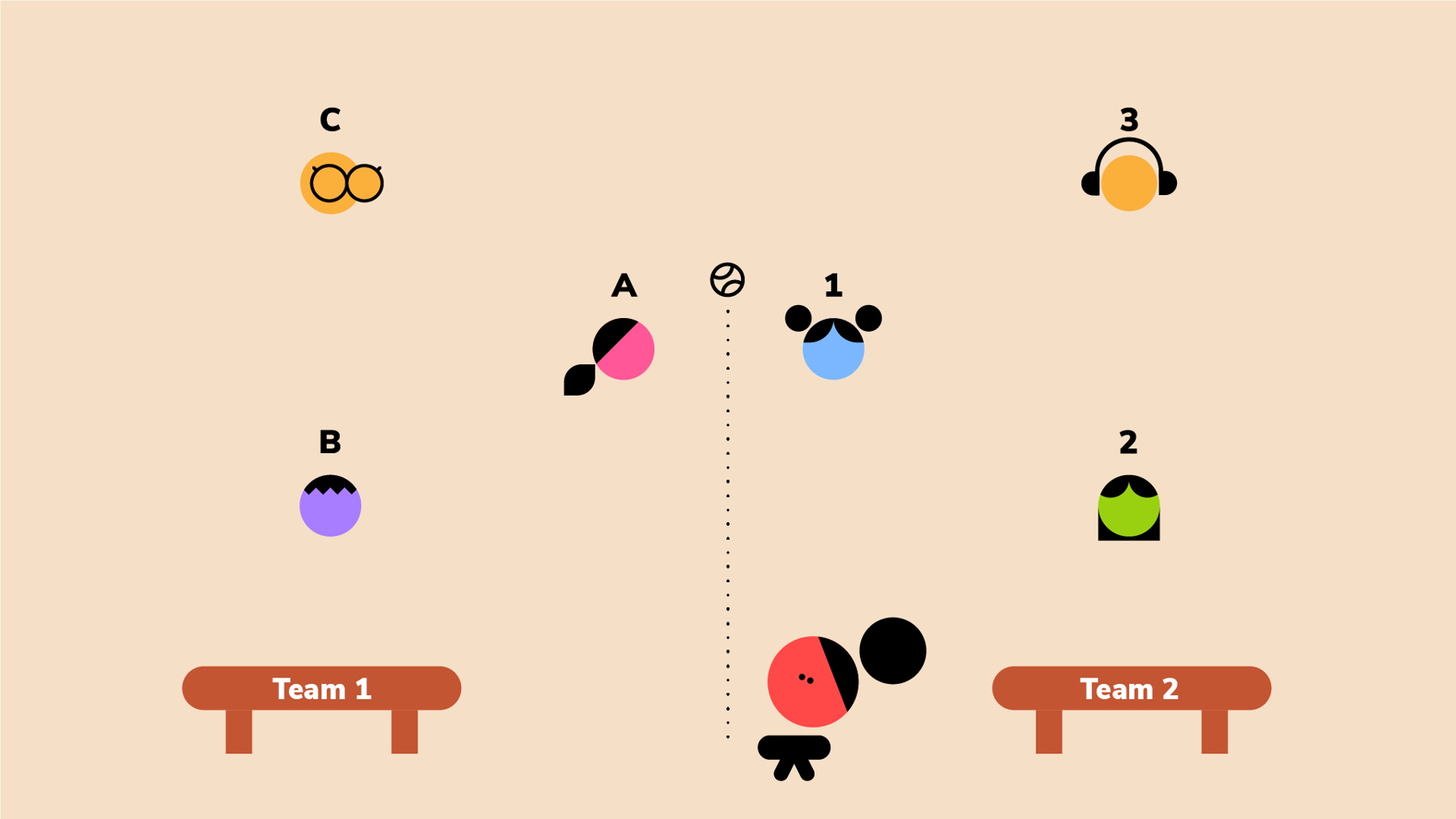
Interceptor
You’ll need
- Sticky tape
- A4 paper
- Soft balls

Before you begin
- Use the safety checklist to help you plan and risk assess your activity. Additional help to carry out your risk assessment, including examples can be found here. Don’t forget to make sure all young people and adults involved in the activity know how to take part safely.
Get ready to play
- Split into two teams.
- The person leading the game will give everyone in the first team a number (one, two, three, and so on). They’ll give everyone in the other team a letter (A, B, C, and so on).
- Everyone should write their letter or number on a piece of paper and stick it to the front of their top with sticky tape.
Play the game
- Players need to pass the ball to everyone in their team in turn. The other team will try to intercept the ball.
- When a player catches the ball, they should pass it to someone else in their team. As soon as they’ve passed the ball, they should go over to the person leading the game, and hand in their piece of paper with the number or letter on. This lets the person leading the game know that they’ve caught the ball.
- The winning team is the first one to pass the ball to all of their team members. The person leading the game can check because they’ll have everyone’s numbers.
- Players can’t move when they’re holding the ball, but they can turn on the spot. Their team members can move around.
- Players can’t touch other players.
- Players can’t touch the ball when someone else has hold of it.
- Players can’t stand too close to the person with the ball. They need to be at least two arm lengths away.
- It’s OK if the ball touches the floor or the wall.
- Players can throw, bounce or roll the ball.
- It doesn’t matter in which order the people in the team catch the ball.
- It’s OK for players to catch the ball more than once each. They just need to try and pass it to someone in their team who hasn’t caught it yet.
- Players should show a ‘good sporting attitude’. This means things such ss speaking kindly to their teammates, being encouraging, not getting cross or frustrated and sticking to the rules, even if they think the person leading the game isn’t watching.
Reflection
In this game, you needed to be a team player. How did your team work together? Did you communicate well? Were you encouraging and kind to each other?
- Did you have a leader? Did you need a leader? Did you use any tactics as a team?
- Did anyone do anything really helpful for the whole team? And did you sometimes have to put the team first, rather than what you wanted to do? For example, did you let other people catch the ball if you’d already had a go?
- If you played more than once with different rules, or changed the rules, what difference did it make?
This game was also a fun way to be active. What kind of active skills did you practice in this game (catching, hand-eye coordination, being fast)?
- Did you enjoy this way to stay active? If you enjoyed this game, are there any sports you may like to try that use similar skills, such as netball, football or hockey?
- If this game isn’t your favourite, that’s OK too - there are lots of different ways to be active.
- What other ways of being active do you think you may like to try? For example, tennis, swimming or fencing.
Safety
All activities must be safely managed. You must complete a thorough risk assessment and take appropriate steps to reduce risk. Use the safety checklist to help you plan and risk assess your activity. Always get approval for the activity, and have suitable supervision and an InTouch process.
- Active games
The game area should be free of hazards. Explain the rules of the game clearly and have a clear way to communicate that the game must stop when needed. Take a look at our guidance on running active games safely.
- To make it clearer which team is which, people could wear bibs, jumpers or scarves of one colour.
- You could also use different colours of paper for the letters and the numbers.
- To make it easier, people could be allowed to pass people the ball if they’re less than two arms lengths away.
- To make it trickier, teams could have to start again from the beginning when the ball is intercepted. If you play this rule, people can’t hand in the paper with their numbers or letters on – they’ll just have to tell the person leading the game what letter or number they are, so they can make a note of it.
- You could also add more rules, such as playing in silence, players standing on the side to watch once they’ve caught the ball once, or only using one way of passing the ball, such as having to roll it.
- You could add another team into the game and give them pieces of paper with shapes or colours on.
- You could play this game using a sound or bell ball if anyone has a visual impairment. Everyone will have to be silent, unless they’re letting another player know they’re about to pass the ball, or saying their number out loud.
- You can also play this game seated on the floor – everyone can throw or roll the ball, and crawl or slide to intercept it.
- Make it obvious who’s in which team if anyone finds it tricky. You could give out bibs, or have one team wear sweatshirts and the other not.
- People could use their usual mobility aids in this game. You may need to change the rules about how the ball can be passed. For example not allowing it to be rolled if anyone uses a wheelchair and can’t reach the floor.
- Anyone who doesn’t want to play could be a referee, spotting if any of the rules are being broken and helping to keep track of who’s caught the ball.
All Scout activities should be inclusive and accessible.
You could use this game to talk about other games which involve intercepting, such as football, netball, basketball or hockey, to introduce the Physical Recreation Activity Badge or Sports Enthusiast Activity Badge.

